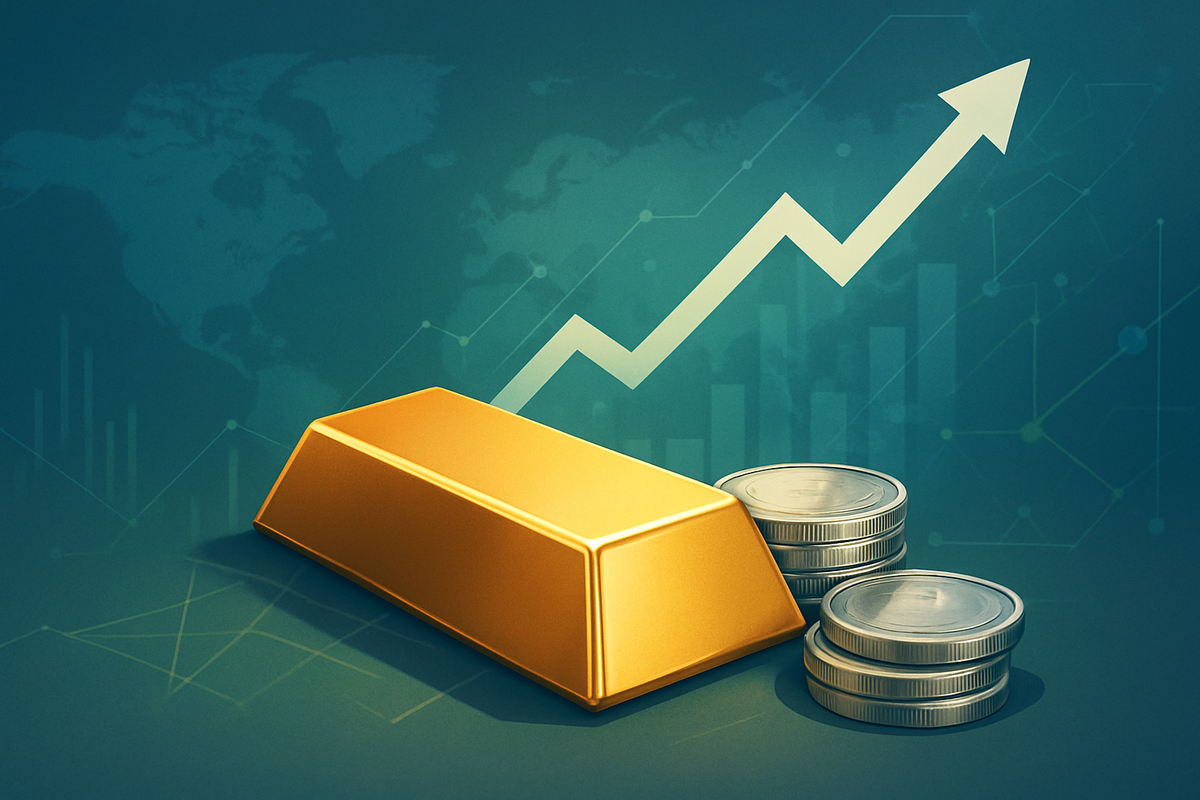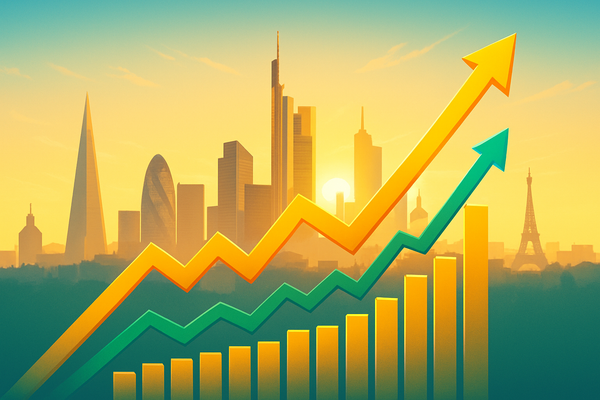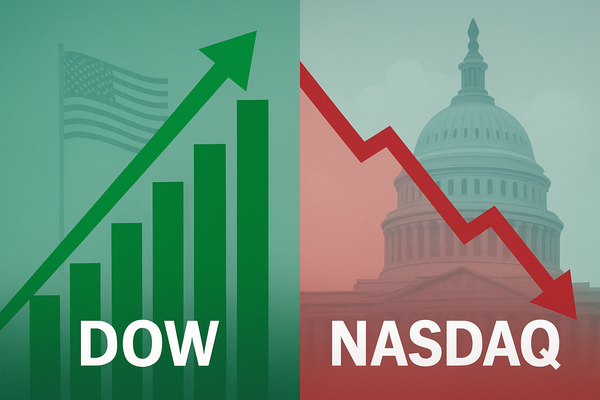After the Gold Rush: Re-evaluating Commodities as Portfolio Cornerstones

The financial markets have recently witnessed an extraordinary "gold rush" in precious metals, particularly throughout late 2024 and much of 2025. This surge has seen gold prices reach unprecedented highs, climbing above $4,300 per ounce in October 2025 – an astonishing annual increase of over 60%. Silver has also experienced a significant resurgence, with its price rising by nearly 75% year-to-date in 2025. This dramatic uplift in commodity values has reignited discussions among investors regarding the strategic role of these tangible assets in well-diversified portfolios, emphasizing their potential for diversification, inflation hedging, and robust risk management in an increasingly volatile global economic landscape.
The immediate implications of this commodity boom are profound. Investors are increasingly recognizing the inherent value of commodities, not merely as speculative plays but as fundamental components for portfolio resilience. In an environment marked by persistent geopolitical uncertainties, inflationary pressures, and a notable shift in central bank strategies, commodities offer a crucial counterbalance to traditional asset classes like equities and fixed income. This renewed focus on hard assets underscores a broader re-evaluation of investment paradigms, prompting a strategic pivot towards assets that have historically demonstrated their ability to preserve capital and generate returns during periods of market stress.
The Unprecedented Surge: A Look at the 2024-2025 Commodity Boom
The recent "gold rush" in precious metals, unfolding from late 2024 through 2025, has been nothing short of remarkable. Gold, the perennial safe-haven asset, shattered previous records, soaring past $4,300 per ounce by October 2025. This meteoric rise represents an annual gain exceeding 60%, a testament to its enduring appeal amidst global turmoil. Not to be outdone, silver, often considered gold's more volatile cousin, quietly staged its own revival, with its price appreciating by almost 75% year-to-date in 2025, even outpacing gold's impressive gains for a significant portion of the year. This widespread accumulation of silver by the public further highlights the broad-based investor interest in precious metals.
Several converging factors have fueled this extraordinary rally. Foremost among them is persistent geopolitical uncertainty, with ongoing conflicts and political instability creating a pervasive sense of anxiety across global markets. This environment naturally drives investors towards assets perceived as safe havens. Simultaneously, strong central bank demand has played a pivotal role. Central banks globally, particularly those in emerging markets, have been aggressive net purchasers of gold, seeking to diversify their reserves away from the U.S. dollar and hedge against potential risks to the international monetary system. China, for instance, has been a leading accumulator, strategically reducing its reliance on U.S.-centric financial markets.
Adding to these drivers are persistent inflation concerns. Despite efforts by central banks to tame rising prices, "sticky inflation" has remained a significant macroeconomic challenge. In such an environment, gold and other commodities are historically viewed as effective hedges, preserving purchasing power as fiat currencies potentially erode. The initial market reaction to this surge has been a palpable shift in investor sentiment, moving away from riskier assets and towards the perceived stability of precious metals. This has led to increased capital inflows into broader commodity funds and a renewed focus on gold mining stocks, as investors seek to capitalize on the upward price trajectory and underlying demand drivers.
While some market commentators have suggested that the "gold rush is over" for commodities, implying a potential peak in prices, the underlying structural demand drivers remain robust. Geopolitical instability, policy uncertainty, and continued central bank buying are seen as enduring factors that could sustain interest in precious metals and broader commodities for the foreseeable future, challenging notions of an imminent downturn.
Companies Navigating the Commodity Wave: Winners and Losers
The robust performance of commodities, especially precious metals, inevitably creates a distinct landscape of winners and losers among public companies. Gold mining companies, in particular, stand to benefit significantly from elevated gold prices. Companies like Barrick Gold Corporation (NYSE: GOLD) and Newmont Corporation (NYSE: NEM) are direct beneficiaries, as higher gold prices translate directly into increased revenues and potentially wider profit margins, assuming production costs remain relatively stable. These companies can leverage stronger cash flows for debt reduction, increased shareholder returns, or investments in exploration and development to expand their reserves. Silver miners, such as Pan American Silver Corp. (NASDAQ: PAAS) and Wheaton Precious Metals Corp. (NYSE: WPM), are experiencing a similar tailwind from the resurgence in silver prices.
Beyond the direct miners, companies involved in the "picks and shovels" aspect of the commodity industry also stand to gain. This includes manufacturers of mining equipment, engineering firms specializing in mine construction, and logistics companies involved in the transportation of raw materials. For instance, companies like Caterpillar Inc. (NYSE: CAT), a major supplier of mining and construction equipment, could see increased demand for their machinery as mining operations become more profitable and potentially expand. Similarly, firms providing geological surveying, drilling services, and processing technologies would likely experience an uptick in business.
Conversely, some sectors and companies might face headwinds. Industries heavily reliant on commodity inputs, such as manufacturing, construction, and certain consumer goods, could see their input costs rise significantly. For example, a sustained increase in copper or aluminum prices could squeeze the margins of companies like General Motors Company (NYSE: GM) or Boeing Company (NYSE: BA), which use vast quantities of these metals in their products. Furthermore, companies with significant unhedged exposure to rising energy prices, which often correlate with broader commodity rallies, could see their operational expenses climb. While not directly a "loser," companies that fail to adequately diversify their portfolios or adapt to the shifting investment landscape, remaining overly concentrated in traditional equities or bonds, might miss out on the diversification and hedging benefits offered by commodities during this period.
Broader Implications and Historical Parallels
The current commodity surge, particularly in precious metals, fits into several broader industry trends and carries significant wider implications. One of the most prominent trends is the ongoing narrative of de-dollarization and the diversification of global reserve assets. Central banks, especially in emerging economies, are actively increasing their gold holdings to reduce their reliance on the U.S. dollar, hedging against potential geopolitical risks and shifts in the global monetary order. This structural demand from official institutions provides a robust floor for gold prices and signals a long-term shift in global financial architecture. The ripple effects extend to the entire financial ecosystem, potentially influencing foreign exchange markets, bond yields, and the relative strength of various national currencies.
Regulatory and policy implications are also noteworthy. Governments and international bodies might scrutinize commodity markets more closely, especially if price volatility leads to concerns about market manipulation or inflationary pressures on consumer goods. There could be increased calls for transparency in commodity trading or even discussions around strategic reserves of critical materials. Furthermore, the focus on commodities could accelerate investments in resource exploration and extraction, potentially leading to new environmental regulations or debates around sustainable mining practices.
Historically, periods of significant commodity rallies often coincide with geopolitical instability and inflationary cycles. The 1970s, for example, saw a major commodity boom driven by oil shocks and high inflation, with gold prices soaring. More recently, the 2007-2008 commodity bubble, preceding the global financial crisis, showcased how speculative interest could drive prices to unsustainable levels before a sharp correction. However, the current rally appears to have more fundamental underpinnings, with strong central bank demand and persistent geopolitical tensions acting as structural supports rather than purely speculative froth. This distinguishes the current situation from past bubbles, suggesting a more sustained re-evaluation of commodities' intrinsic value as a store of wealth and a hedge against systemic risks.
What Comes Next: Navigating the Commodity Horizon
Looking ahead, the strategic role of commodities in investment portfolios is likely to evolve further. In the short term, the sustained demand from central banks, coupled with ongoing geopolitical uncertainties, suggests that precious metals, particularly gold and silver, may continue to find support. Investors should watch for any shifts in central bank purchasing patterns or significant de-escalations in global conflicts, which could impact price momentum. The "sticky inflation" narrative will also be a critical factor; if inflation proves more persistent than anticipated, commodities could maintain their appeal as a hedge.
In the long term, the increasing global demand for raw materials driven by population growth, urbanization, and the transition to green energy technologies will likely underpin the broader commodity complex. This includes industrial metals, agricultural products, and energy commodities. Potential strategic pivots for investors include a greater emphasis on diversified commodity exposure, perhaps through broad-based commodity indices or actively managed funds, rather than solely focusing on precious metals. The "picks and shovels" strategy, investing in companies that provide essential services and equipment to the mining and energy sectors, could also offer a more stable and less volatile avenue for participation compared to direct commodity futures.
Market opportunities may emerge in specific sub-sectors of commodities that are critical for the energy transition, such as lithium, copper, and rare earth elements. Challenges, however, include the inherent volatility of commodity markets, supply chain disruptions, and the potential for regulatory interventions. Potential scenarios range from a continued, albeit moderated, bull market for commodities, driven by structural demand and geopolitical factors, to periods of consolidation or even corrections if global economic growth falters or if geopolitical tensions ease significantly. Investors will need to remain agile, adapting their strategies to the evolving macroeconomic and geopolitical landscape, with a keen eye on inflation data, central bank policies, and global stability.
Comprehensive Wrap-up: Enduring Significance and Investor Vigilance
The recent "gold rush" in precious metals has unequivocally highlighted the strategic and enduring role of commodities in robust investment portfolios. Key takeaways include their proven efficacy as diversifiers, offering low correlation to traditional assets, and their invaluable function as inflation hedges, preserving purchasing power in volatile economic climates. Furthermore, commodities, particularly gold, reinforce their position as critical risk management tools, providing a safe haven during periods of geopolitical instability and market turbulence. The significant central bank demand observed in 2024-2025 underscores a structural shift in global reserve management, lending further credence to the long-term relevance of these tangible assets.
Moving forward, the market is poised for continued vigilance. While the immediate intensity of the "gold rush" might moderate, the underlying drivers – persistent geopolitical risks, inflation concerns, and a re-evaluation of global monetary systems – suggest that commodities will remain a crucial component of strategic asset allocation. Investors should assess their current portfolio allocations to ensure adequate exposure to commodities, considering both direct investments and indirect plays through related industries. Diversification within the commodity space, beyond just precious metals to include industrial metals, energy, and agriculture, will be paramount.
In the coming months, investors should closely monitor several key indicators: central bank gold purchasing trends, inflation data globally, and any significant developments in geopolitical hotspots. The performance of commodity-linked equities, particularly mining companies, will also offer insights into market sentiment and profitability within the sector. Ultimately, the recent events serve as a powerful reminder that in an unpredictable world, a well-constructed portfolio leverages the unique benefits of commodities to enhance resilience, mitigate risk, and potentially capture growth opportunities.
This content is intended for informational purposes only and is not financial advice



